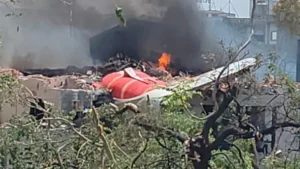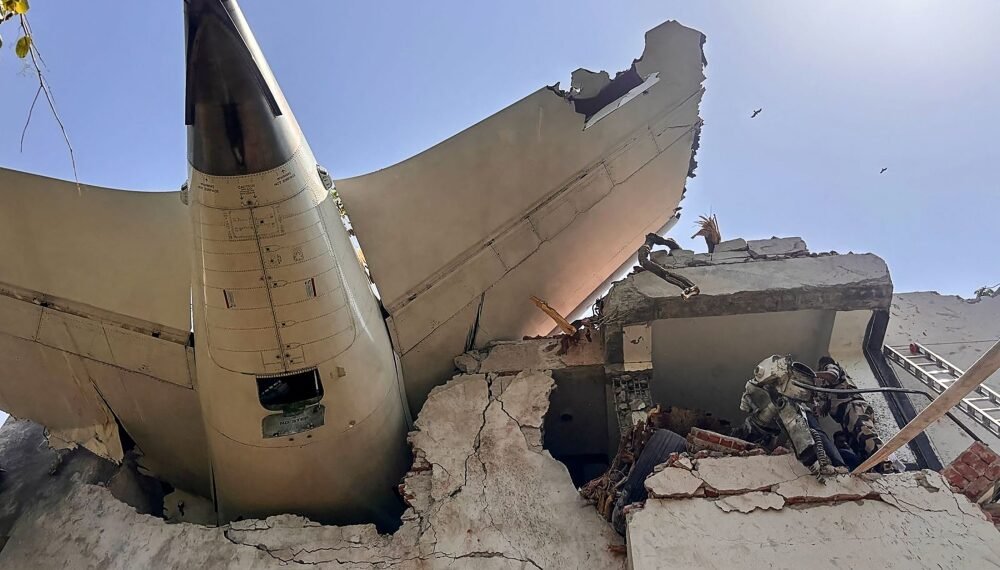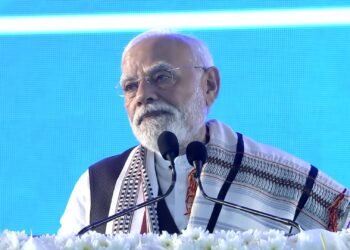As all 242 lives are confirmed lost in the first-ever fatal 787 crash, investigators are probing whether Boeing’s manufacturing shortcuts contributed to the tragedy.
BY PC Bureau
The tragic crash of Air India Flight AI171, a Boeing 787 Dreamliner, in Ahmedabad, Gujarat, today, which claimed the lives of all 242 passengers and crew aboard, has thrust a whistleblower’s chilling warnings into the spotlight. Sam Salehpour, a Boeing quality engineer, had previously labeled the 787 Dreamliner a “ticking time bomb” due to alleged manufacturing flaws, raising serious questions about the aircraft’s safety as investigators begin probing the cause of the disaster.
The ill-fated flight, bound for London, took off from Sardar Vallabhbhai Patel International Airport at approximately 6:45 PM IST. Just minutes later, the aircraft issued a MAYDAY call before plummeting into a residential area in the Meghani Nagar neighborhood, killing several residents on the ground, including medical students at a nearby hostel. Preliminary flight data indicates the plane reached a maximum altitude of 625 feet before a rapid descent, suggesting a possible stall or catastrophic mechanical failure. This marks the first fatal crash of a Boeing 787 Dreamliner since the aircraft entered commercial service in 2011.
 Read: Air India Crash: No Survivors in Ahmedabad Dreamliner Tragedy
Read: Air India Crash: No Survivors in Ahmedabad Dreamliner Tragedy
Salehpour’s warnings, first aired in April 2024 during testimony before the U.S. Senate Homeland Security and Governmental Affairs Subcommittee, centered on what he described as systemic manufacturing shortcuts at Boeing. He alleged that the company was improperly fastening sections of the 787’s fuselage, with misaligned parts being forced together in over 1,000 aircraft. These flaws, he claimed, could compromise the structural integrity of the planes over time, potentially leading to mid-air breakups after thousands of flight cycles. “The Dreamliner is a flying bomb waiting to go off,” Salehpour reportedly told colleagues, a statement that has gained renewed attention in the wake of the Ahmedabad tragedy.
“I have analysed Boeing data to conclude that the company is taking manufacturing shortcut on 787 program that can significantly reduce safety.”
— Boeing Whistleblower Sam Salehpour in Apr 2024
pic.twitter.com/tdRmQ4u1c1— Shantanu (@shaandelhite) June 12, 2025
Boeing, in response to Salehpour’s 2024 allegations, maintained that rigorous testing showed no immediate safety risks and emphasized their confidence in the 787’s design and performance. The Federal Aviation Administration (FAA) launched an investigation into the claims, but no grounding of the Dreamliner fleet was ordered at the time. The company issued a statement today expressing “deep sorrow” for the loss of life in Ahmedabad and pledged full cooperation with the Directorate General of Civil Aviation (DGCA) and international investigators to determine the crash’s cause.
Aviation experts caution that plane crashes are often the result of multiple factors, including mechanical issues, pilot error, or environmental conditions. While Salehpour’s allegations have fueled speculation about a link to the crash, no evidence has yet confirmed that the manufacturing flaws he cited directly contributed to the disaster. The 787 Dreamliner has faced scrutiny in the past, notably in 2013 when battery fires prompted a temporary grounding of the global fleet, but it has since maintained a strong safety record until now.
Read: Air India crash: First-ever fatal Traged of Boeing 787 Dreamliner
Residents of Ahmedabad are reeling from the devastation, with the crash site—spanning a 1.5-mile radius—cordoned off as emergency responders and investigators comb through the wreckage. The Indian government has promised swift answers, with Prime Minister Narendra Modi expressing condolences and vowing support for the victims’ families. Air India has suspended all 787 Dreamliner flights pending initial findings, and global aviation authorities are expected to review the aircraft’s safety protocols.
READ: Air India Crash: Bodies recovered Charred Beyond Recognition
As the investigation unfolds, Salehpour’s warnings cast a long shadow over Boeing, an aerospace giant already grappling with criticism over its safety culture following high-profile incidents involving its 737 MAX aircraft. The question now is whether the “flying bomb” label will prove prophetic or if the Ahmedabad crash will reveal other underlying causes. For the families of the 242 victims and the residents of Meghani Nagar, the search for answers cannot come soon enough.













